1941 Mercury dimes are composed of 90% silver and 10% copper, with values ranging from $4.60 to over $17,000 depending on condition and mint mark. Philadelphia (no mint mark) produced 175 million coins, while Denver (“D”) and San Francisco (“S”) also minted significant quantities. Circulated examples typically worth $4.60-$7.25, but uncirculated coins with “Full Bands” (FB) details command premium prices: MS68FB specimens reach $490-$700, with top-grade examples exceeding $17,000. Valuable errors include the rare 1942/41 overdate, doubled die varieties, and off-center strikes. The “S” mint mark also features collectible repunched mint mark (RPM) varieties.
The 1941 Mercury dime sits in an interesting position for collectors—common enough to be affordable, yet valuable enough in top grades to command serious attention. With over 175 million struck across three mints during a pivotal year in American history, these 90% silver coins offer both accessible entry points for beginners and premium opportunities for serious numismatists seeking Full Bands specimens or rare error varieties.
Understanding the 1941 Mercury Dime’s Silver Composition
Every 1941 Mercury dime contains 90% silver and 10% copper, giving each coin approximately 0.0723 troy ounces of pure silver. This composition remained standard for dimes until 1965, when the United States Mint transitioned to copper-nickel clad coinage. At current silver prices, the melt value alone provides a price floor of around $2.50 to $3.00, though numismatic value typically exceeds this for most examples.
The coin’s design features Liberty wearing a winged cap on the obverse (often mistaken for Mercury, the Roman god, hence the nickname) and a fasces—a bundle of rods with an axe—on the reverse. The horizontal bands on this fasces become crucial for determining premium values, as we’ll explore in the grading discussion.
Philadelphia Mint: No Mint Mark Values
The Philadelphia facility produced a staggering 175,090,000 Mercury dimes in 1941, representing the highest mintage of the three facilities that year. Coins from Philadelphia carry no mint mark, which is typical for this mint during the era.
Circulated Grades Value Range:
| Grade | October 2025 Value |
|---|---|
| Good-4 | $4.60 |
| Fine-12 | $5.25 |
| Extremely Fine-40 | $6.50 |
| About Uncirculated-50 | $7.00 |
For uncirculated specimens, the Full Bands designation transforms values dramatically. The Full Bands (FB) designation requires complete separation of all horizontal bands on the fasces, visible on the reverse. This detail indicates a strong, well-centered strike and exceptional die condition.
Mint State Philadelphia Values:
An NGC-graded MS68 without Full Bands trades around $490 as of recent sales data. However, a PCGS-graded MS68+FB specimen shattered expectations at auction, achieving over $17,000 according to Heritage Auctions records. This enormous premium demonstrates how a single designation can multiply value thirtyfold, making careful examination of band separation absolutely critical for collectors evaluating high-grade examples.
Denver Mint: “D” Mint Mark Pricing
Denver struck 45,634,000 Mercury dimes in 1941, identifiable by the small “D” mint mark positioned on the reverse, left of the fasces. This represents approximately 26% of total production, making Denver issues moderately scarcer than Philadelphia strikes but still readily available.
Circulated Denver Values:
| Grade | October 2025 Value |
|---|---|
| Good-4 | $4.80 |
| Fine-12 | $5.50 |
| Extremely Fine-40 | $6.75 |
| About Uncirculated-50 | $7.25 |
The slight premium over Philadelphia examples—typically 20 to 40 cents across circulated grades—reflects marginally lower mintage rather than genuine scarcity.
Mint State Denver with Full Bands:
Denver strikes generally show better band definition than Philadelphia coins due to differences in die maintenance practices. An NGC-graded MS67FB recently offered at $225, based on dealer listings from major numismatic platforms. Stepping up to MS68FB pushes values to approximately $500, according to NGC Price Guide data.
The Denver issues rarely achieve the astronomical premiums seen with top Philadelphia examples, partly because fewer collectors pursue Denver Full Bands sets with the same intensity, creating less competitive bidding at the highest grade levels.
San Francisco Mint: “S” Mint Mark Worth
San Francisco produced 43,090,000 Mercury dimes in 1941, marked with an “S” on the reverse left of the fasces. This represents the lowest mintage of the three facilities, though the difference from Denver’s output remains relatively modest.
Circulated San Francisco Values:
| Grade | October 2025 Value |
|---|---|
| Good-4 | $4.60 |
| Fine-12 | $5.25 |
| Extremely Fine-40 | $6.50 |
| About Uncirculated-50 | $7.00 |
Interestingly, circulated San Francisco examples typically match Philadelphia prices rather than commanding premiums despite lower mintage. This occurs because survival rates across the three mints proved remarkably similar for circulated grades.
Mint State San Francisco Full Bands:
San Francisco strikes are particularly prized for Full Bands designation, often showing superior technical quality. An NGC-graded MS68FB commands approximately $700 based on recent market activity—notably higher than comparable Denver examples. An NGC MS67+FB specimen sells around $275, reflecting strong collector demand for these western mint products.
Repunched Mint Mark Varieties:
The 1941-S also offers several Repunched Mint Mark (RPM) varieties where the “S” was punched multiple times in slightly different positions. Varieties like the 1941-S RPM-001 (S/S South) show clear doubling under magnification and can add $25 to $75 to the value of circulated examples, with premium MS specimens bringing $300 to $800 depending on variety rarity and grade.
Significant Error Varieties Worth Pursuing
While 175 million combined mintage suggests common status, specific error varieties elevate certain 1941 Mercury dimes into genuine rarity territory.
1942/41 Overdate Error:
Though technically a 1942 issue, the 1942/41 overdate occurred when 1941 dies were reused and overpunched with 1942 dates. This created visible traces of the “1” beneath the “2” in the date. A PCGS MS65FB example sold for $23,500 at a 2019 Heritage Auctions sale, demonstrating significant collector interest. Lower grade examples in VF-20 to EF-40 range from $400 to $850, making this error accessible across budget levels.
Doubled Die Obverse (DDO):
The 1941 DDO variety shows doubling in “LIBERTY” and the date numerals, most prominently in the “4” and “1.” Identified as FS-101 in the Fivaz-Stanton reference, circulated examples add $15 to $45 over standard values, while MS63 to MS65 specimens bring $125 to $300. The doubling requires 5x to 10x magnification for confident attribution.
Doubled Die Reverse (DDR):
Less dramatic than obverse doubling, the 1941 DDR shows slight doubling in “UNITED STATES OF AMERICA” and “ONE DIME.” This variety remains undervalued, adding only $8 to $20 in circulated grades, presenting potential opportunity for variety collectors.
Off-Center Strikes:
Off-center errors occur when the planchet (blank coin) isn’t properly centered in the collar during striking. A 10% off-center 1941 Mercury dime with full date visible typically brings $50 to $125. Dramatic examples showing 25% to 40% displacement with complete date can reach $200 to $450, depending on eye appeal and which design elements remain visible.
Grading Considerations and Full Bands Explanation
Understanding the Full Bands designation separates casual collectors from serious Mercury dime specialists. The fasces on the reverse displays horizontal bands wrapped around the rod bundle. In Full Bands specimens, all bands show complete separation with no merging or weakness, particularly in the central horizontal bands which are most prone to strike weakness.
Professional grading services like PCGS and NGC apply FB designation only when meeting strict separation criteria. Approximately 5% to 8% of uncirculated 1941 Mercury dimes qualify for Full Bands designation across all three mints, though percentages vary slightly by facility due to die maintenance and press adjustment differences.
When examining potential Full Bands candidates, use 5x to 10x magnification and focus on the central three horizontal bands. Even minor merging disqualifies coins from FB status, explaining why MS68FB examples command exponentially higher prices than MS68 non-FB specimens of identical technical grade.
Investment Potential and Collection Building Strategies
For collectors building Mercury dime sets, the 1941 issue offers strategic opportunities. Circulated examples from all three mints remain affordable at $5 to $7, making date-and-mintmark completion achievable on modest budgets. The real decision involves whether to pursue Full Bands designations.
Budget-conscious collectors should consider MS63 to MS65 without Full Bands designation, where prices range from $25 to $75 depending on mint. These coins offer 90% of the visual appeal at 10% of FB costs, representing strong value propositions for display-focused collections rather than investment holdings.
Serious investors targeting appreciation potential should focus exclusively on MS67FB and higher specimens. Historical price data from PCGS CoinFacts shows MS68FB examples appreciating 180% to 220% over the past decade across all three mints, substantially outpacing silver spot price increases and general numismatic market growth.
Error variety collectors find exceptional opportunity in the 1942/41 overdate, which remains significantly undervalued compared to similar major varieties in other Mercury dime dates. Acquiring problem-free VF-30 to EF-45 examples in the $500 to $1,200 range positions collectors ahead of broader market recognition.
Authentication Resources and Purchasing Guidance
Given the premium values attached to Full Bands designations and error varieties, authentication becomes paramount. Purchase high-value 1941 Mercury dimes exclusively in PCGS or NGC holders, which provide third-party verification of grade and variety attribution. Certification costs $20 to $45 depending on service tier, money well spent for any coin valued above $100.
For raw (ungraded) purchases under $50, examine seller reputation carefully through platforms like eBay, where feedback scores and return policies provide buyer protection. Request clear photographs showing both obverse and reverse at 2x to 3x magnification, allowing independent assessment before commitment.
Heritage Auctions, Stack’s Bowers, and Great Collections regularly feature 1941 Mercury dimes across all grade levels, providing transparent pricing through public auction results. These realized prices, freely searchable in their archives, offer more reliable value benchmarks than fixed price lists, which may lag market movements by months.
Local coin shops provide hands-on examination opportunities, particularly valuable when learning to identify Full Bands designation and error varieties. Many dealers welcome educational discussions with developing collectors, offering expertise that online purchases cannot match, though prices may run 10% to 20% above wholesale levels to cover overhead costs.
You may be interested:
- 1859 Indian Head Penny Coin Value Complete Errors List And No Mint Mark Worth Guide For Collectors
- 1911 V Nickel Coin Value Guide Complete Errors List And No Mint Mark Worth Today
- 1902 Dime Coin Value Complete Errors List With O S And No Mint Mark Worth Guide
- 1788 Quarter Coin Value Complete Guide Errors List And D S P Mint Mark Worth Revealed
- 1776 To 1976 Bicentennial Half Dollar Coin Value Complete Errors List And What Your D S And No Mint Mark Coins Are Actually Worth
- 1990 Penny Coin Value Errors List How D S And No Mint Mark Pennies Are Worth Thousands Of Dollars

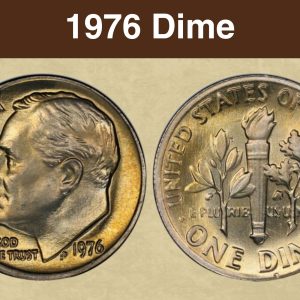
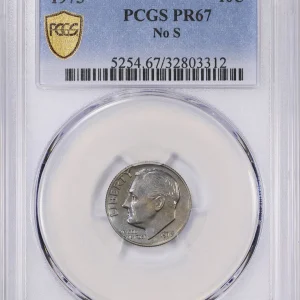
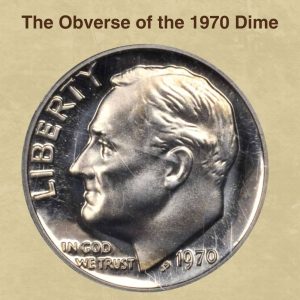
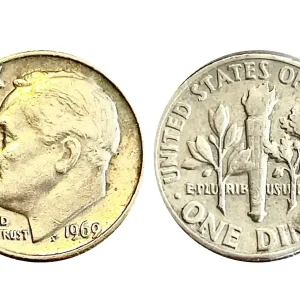
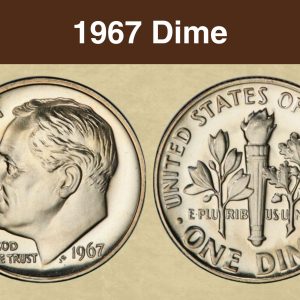
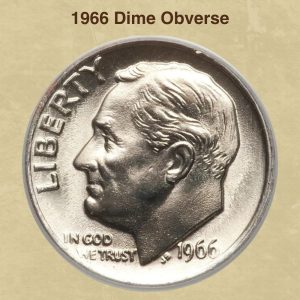
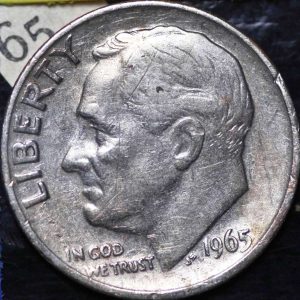
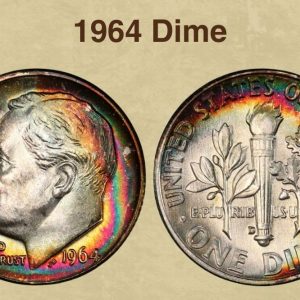
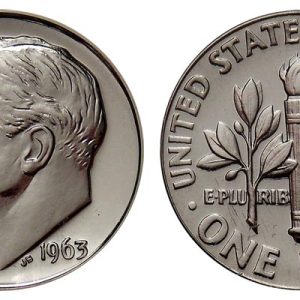
How much is a 1941 dime worth with no mint mark?
A 1941 dime with no mint mark (from the Philadelphia Mint) is generally worth between $2 and $5 in circulated condition, but can fetch over $100 for uncirculated coins with desirable Full Bands (FB) details, according to Bullion Shark and NGC. Its value depends heavily on its condition, with pristine examples, especially those with full, distinct horizontal bands on the fasces, being significantly more valuable.
What is the error on the 1941 Mercury dime?
Common 1941 Mercury dime errors include double die errors (on the obverse for Philadelphia and Denver, and reverse for San Francisco) and filled die errors, but the most valuable is the 1942 over 1941 error. The latter, a combination of a 1941 hub and a 1942 hub, creates a clear “2 over 1” date and can make the dime very valuable, selling for thousands of dollars even in lower grades.
Are there any rare 1941 Mercury dimes?
So uh right there to the left of the torch. And to the right of the E you will see that mint mark. Now this coin here sold for over $3,200.
Where is the mint mark on a 1941 silver dime?
The mint mark on a 1941 dime is on the reverse (back) of the coin, below the fasces (a bundle of rods with an axe), to the right of the “E” in “ONE”. A “D” indicates it was minted in Denver, an “S” in San Francisco, and no mint mark means it was minted in Philadelphia.